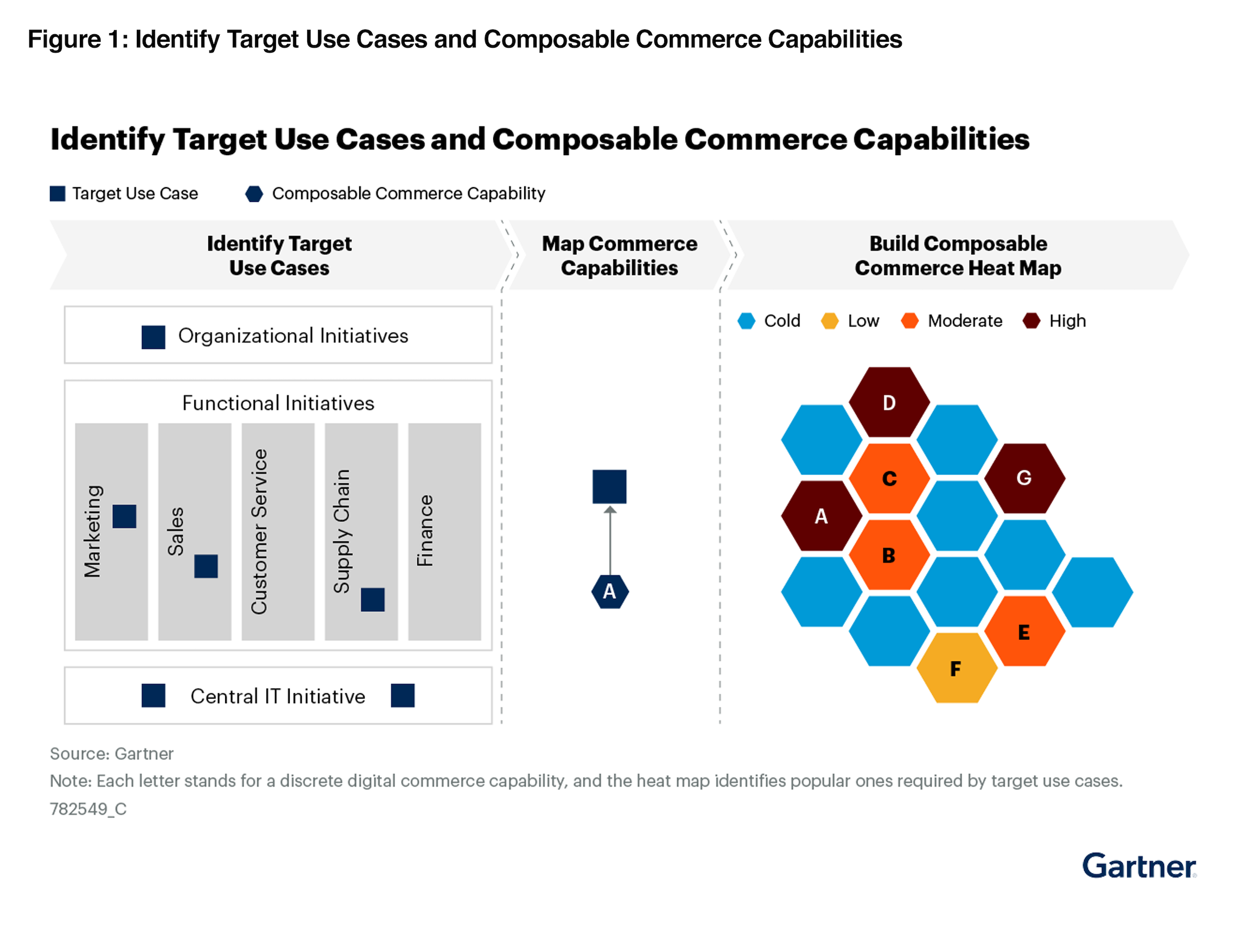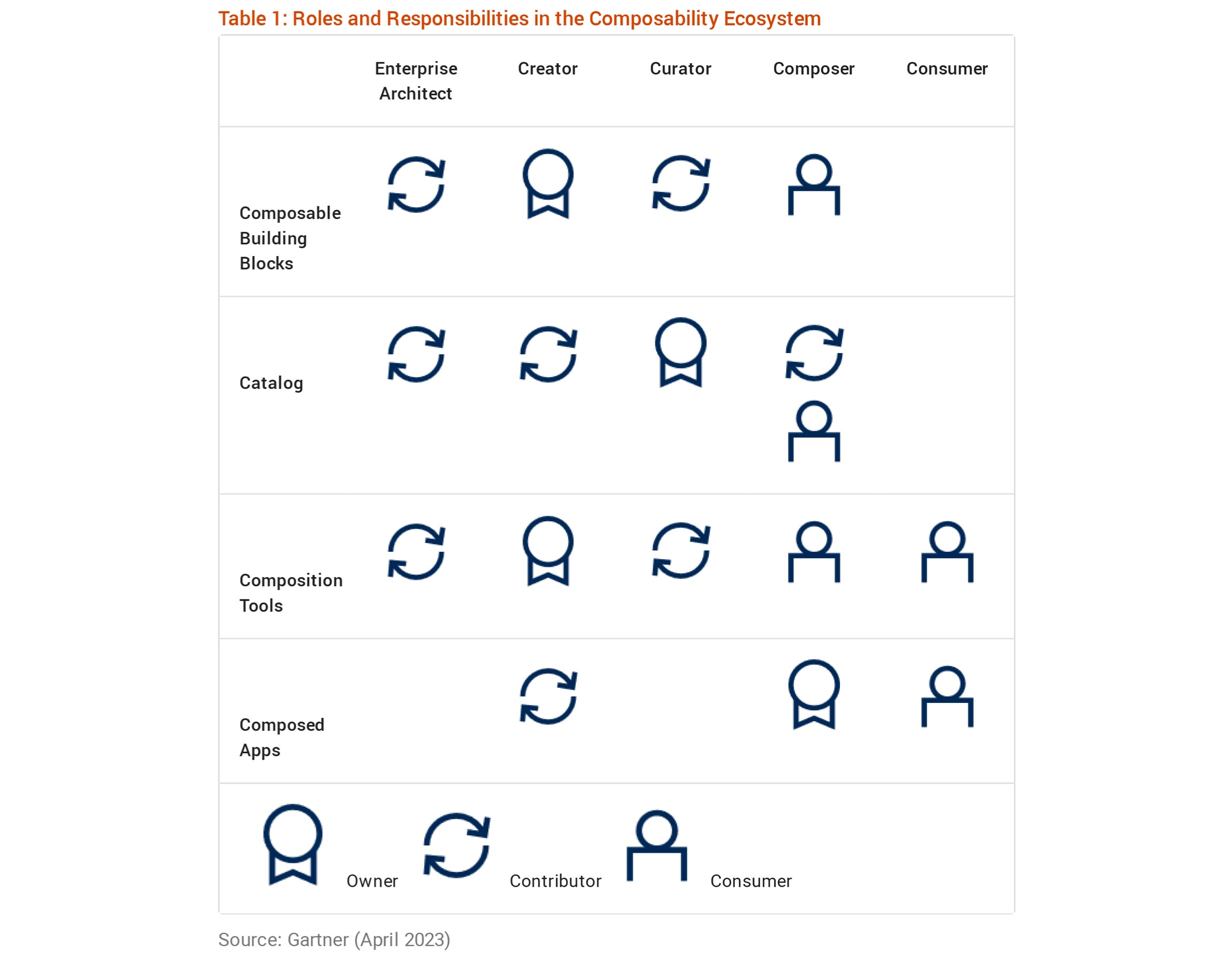
In the three years since Gartner® coined the term composable commerce, many organizations have elected to migrate off their rigid, monolithic platforms to take advantage of the flexibility and agility of this new, modern approach to technology architecture. Those that haven’t are at least starting to explore its potential.

Most technology experts agree the interchangeable, plug-and-play environment of composable commerce is empowering organizations to continually adapt to our constantly changing world. In the past, whenever a brand needed to integrate a new sales channel, payment method or shipping option, or simply wanted to expand into a new market, diversify its product catalog or offer an innovative customer experience, the project required lots of time, resources and risk. Today, that’s no longer the case for brands that embrace the tech-agnostic, API-first, cloud-native design of composable commerce.
At this point, organizations that have taken the composable route should now start looking at ways to leverage the technology to deliver the maximum benefit possible. After all, according to the 2022 Gartner CIO and Technology Executive Survey, only 6% of organizations have high business composability. However, of those, 63% outperformed their peers and competitors in overall business performance, compared to 42% of moderate composability enterprises and 19% of low composability enterprises.
In its recently released report “Increase Organizational Composability by Reusing Composable Commerce Technologies,” Gartner presents three possible reasons why organizations are not recognizing the full potential of composable technology:
Limiting the technology to digital-commerce-only use cases
Limiting the technology to one line of business
Lacking an ecosystem to support the ongoing reuse of technologies
While Gartner acknowledges that reusing composable technology is expensive, its findings show the value is not in cost savings but rather in driving agility, architectural consistency and better decision-making.
Reuse requires investment in modernizing legacy applications, adapting commerce capabilities for other use cases, developing and maintaining integrations, and establishing a supporting ecosystem with the right roles and skills.
By taking the four steps outlined in the report, application leaders can apply composable commerce capabilities to more use cases, which, in turn, showcases the true value of the composable technology.
STEP 1:
Within the scope of digital commerce use cases, organizations can reuse composable commerce building blocks for multiple rollouts. For example, the payment module can be deployed in multiple markets to allow local teams to integrate with local payment providers or optimize local payment processes. Workflow engines can be used by different lines of business catering to their specific ordering and approval processes.
It is also key for application leaders to identify non-digital use cases. Gartner points out that composable commerce technology can be leveraged across the organization in various ways. By exploring initiatives that your marketing, sales, supply chain, or even IT teams are considering, you will find opportunities to implement composable technology as part of the solution.

For example, Harry Rosen, a 69-year-old Canadian luxury menswear retailer, was able to leverage composable commerce to create three incredible customer journeys. Ultimately, the company discovered having the right technology in place digitally enabled the sales and marketing teams, giving them the power to create incredible omnichannel customer journeys. For example, “Get the Look,” is a feature that allows online shoppers to instantly view all the items presented in a single outfit shown on a model. The brand enables the same experience using QR codes which are placed next to the mannequins in store windows and attached to fashion images shown on printed materials. This way customers can also “Get the Look” when window shopping or browsing its quarterly magazine, “Harry,” driving higher sales across the board.
We had the choice to either continue on the monolithic path, probably be frustrated forevermore, or perhaps go down a path that was unknown to us. The MACH® path, the composable commerce path, and do things differently.
Director, Digital Product & Experience, Harry Rosen
STEP 2:
While the majority of enterprise organizations use a top-down management approach, Gartner proposes the bottom-up approach can deliver value much more quickly by making a few cases work first. The report advises application leaders to educate executives and business leaders on the benefits and complexity of the composable approach and obtain their commitment for funding and resources for rolling out to wider parts of the organization.
It’s understandable that business leaders want to proceed with caution when embracing composable commerce. MACH® architecture, which integrates microservices, APIs, cloud-native and headless technologies to establish a composable environment, is vastly different from traditional, monolithic platforms. But, to remain competitive today, it’s important for leaders to be willing to adapt their mindset, as proposed in “Becoming Composable: A Gartner Trend Insight Report, “ which states, “The journey to composable business begins with leaders and decision-makers embracing a new way of thinking — the seed of cultural change that manifests in a new character of emerging business strategies.”
In a recent interview, Kelly Goetsch, Chief Strategy Officer at commercetools, acknowledged that organizations are historically slow to make big changes but that one of the benefits of composability is that you can start small, solving a single commerce problem. “Once you do, you set the stage to incrementally become more composable.” This can help leaders “see opportunity instead of risk, applying the core principles of composability to compose both their teams and their technology.”
STEP 3:
Gartner advises that with input from executive sponsors and business leaders, application leaders should identify business goals and related success metrics before working on reusing composable technologies. These metrics should include both business and technical metrics:
Business metrics: These should align with business objectives and include measurements related to revenue, customers, costs, innovation, speed to market and customer satisfaction.
Technical metrics: These should reflect the effectiveness of the composable approach and include measurements related to ease of use, fit for purpose, discoverability of ecosystem components, development efforts, reduction of redundancy and architectural compliance.
During a roundtable discussion at the Master B2B Summit, Michael Scholz, Vice President of Product & Customer Marketing at commercetools, pointed out that accessing the value of composable solutions requires looking at more than just quantifiable metrics. “There are multiple factors to consider — agility and efficiency, investments in your team, cost avoidance, de-risking projects, productivity gains, etc. — all these things that are difficult to quantify.”
STEP 4:
Although this is an initial experiment of the composable approach, application leaders still need the essential ecosystem components to ensure that reuse is taking place on an ongoing basis. They also need various roles to support the ecosystem, although some roles may be undertaken by the same person at the initial stage.
Gartner presents an overview of the components, as well as descriptions of roles and responsibilities and provides a graphic to visually show application leaders the ecosystem in action.

Conclusion:
Composable commerce has emerged as the go-to architecture for organizations looking for a technology solution to deliver the flexibility, agility and scalability they need to thrive in today’s environment. Countless success stories showcase the successful results composable commerce has delivered for commercetools customers. And, as strong proponents of a future driven by composability, we believe the two predictions Gartner made in its report will come to fruition.
By 2026, the speed of digital innovation will improve by 60%, relative to 2022, for organizations that have established mechanisms to reuse digital commerce modules.
By 2025, 60% of the new custom business applications will be built using reusable business services via a shared curated component catalog or marketplace.
Once an organization has invested in establishing a strong composable foundation, it only makes sense to reuse the same principles and technology throughout the organization. By doing so, they can achieve a high level of business composability and consistently outperform their peers.
To learn more, download the full Gartner report,“Increase Organizational Composability by Reusing Composable Commerce Technologies.”
Gartner, Increase Organizational Composability by Reusing Composable Commerce Technologies, Shandy Shen, 11 April 2023
GARTNER is a registered trademark and service mark of Gartner, Inc. and/or its affiliates in the U.S. and internationally and is used herein with permission. All rights reserved.